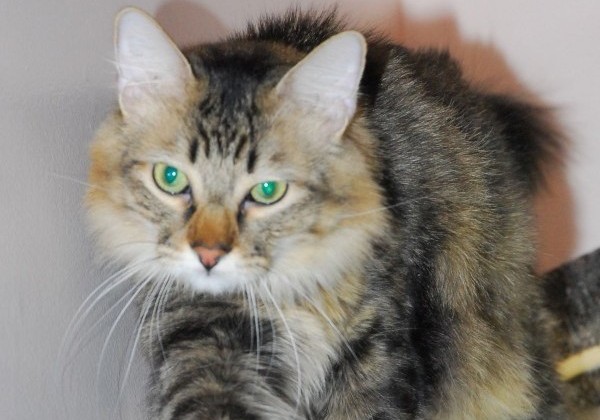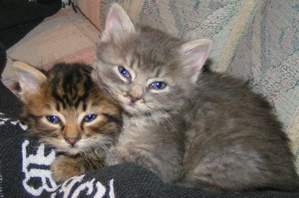What do playful cats look like from underneath? At least here, we can get a glimpse of paws, pads and toes. This is a unique perspective on how Chase, here, holds his paws, and how quickly he swipes and bats, during his interactive playtime. His current favorite toy is a stuffed mouse attached to an elastic string on the end of a stick.
Since taking this video, we’ve had to attach a new mousie to the string, because he finally tore the old one apart enough that I was getting worried about him swallowing pieces of it. The last time he swallowed a piece of a toy, he needed emergency surgery, so we’re really careful about making sure he can’t swallow anything.
Both Chase and Kali were feral kittens; they came to us at only three weeks of age. Despite the fact that they never knew the life of a feral, they’re both a little more “wild” than our other two cats, Gizmo and Aria. We’re not sure why this is, because they’ve been indoors since they were rescued, but it is what it is.
This is especially true for Chase. When he doesn’t get some good interactive playtime, he actually starts pawing at the knob on the back door, and mewing plaintively. He’ll stalk through the house, looking for things to bat around, and try to satisfy his instincts on his own, which doesn’t work too well. We’ve noticed that there’s always a marked improvement in his mood and behavior when we make sure to play with him regularly.
Of course, all four of our cats need their interactive playtime, and we can’t effectively play with Chase by himself. So all four cats get to play, too, as they want.
All cats need interactive playtime
Sometimes, cats can amuse themselves okay with their own toys, but they really do best when you’re around and can make their toy move the way their prey might, in the wild. Keeping their prey instincts satisfied is one way to keep cats, particularly indoor-only cats, satisfied.
When it comes to interactive playtime, one of the most important things you can do is make sure your cat is successful. Make him run after his toy, and jump for it, and chase it, yes, but also let him catch it. According to Cat Behavior Associates, interactive playtime includes both physical and mental stimulation. If your cat never catches his toy, it becomes just frustrating physical exertion, and he may not get excited about playing.
Also, at the end, start winding the action down so your cat can start relaxing and calming down. Don’t end interactive playtime suddenly, because he’ll have all this pent-up energy that suddenly has no release. Cat Behavior Associates says the best way to think of it is as a cool-down, the way you would after your own workout.



